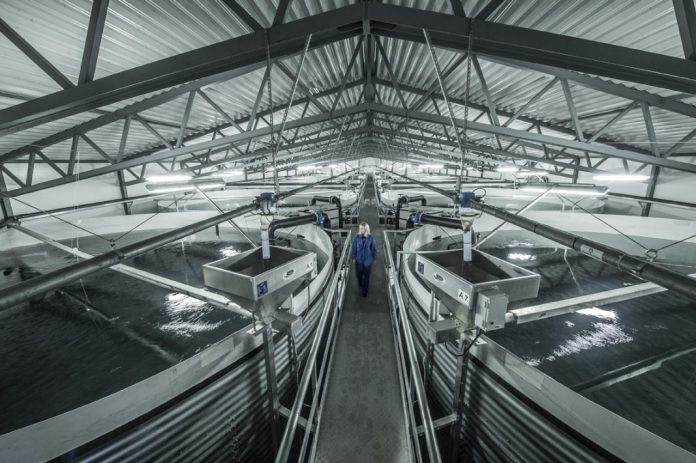Netherlands-based Rabobank observes four different scenarios for the future of salmon farming by 2030. “The big questions are where and when mainstream land-based salmon production start – and who will start it”.
“Despite the uncertainty, RAS operations have the potential to produce around 250,000 metric tons of salmon by 2030,” writes Rabobank in its Aquaculture 2.0: RAS is Driving Change report.
Summarising, analyst Beyhan de Jong wrote that the bank is seeing “the tide turning” for RAS systems over the next decade.

De Jong highlighted four sets of risks, which included financial (high Capex, profitability), operational (biological challenges, tech failure), marketing (price premium, high stocking density) as well as social and regulatory licences risks such as water discharge permits.
This fed into the reports’ four possible scenarios in which the high end of the production volume is 500,000 tonnes and the lower is 50,000 tonnes. The high-end high supply “star is born” scenario would lead to lower prices. While for the lowest “up and comer” scenario four, Rabobank will assume that most of the current projects in the pipeline would not be realised – but it may still create a niche for land-based salmon. For the cost of salmon production, it assumed a range between EUR 3.5/kg to EUR 7/kg. Currently, sea-based salmon production is around EUR 3-4/kg.

“Currently we are at high costs with very low production volumes. Our expectation is somewhere between the “up and comer’ and a ‘new star is born,'” wrote de Jong.
Concluding, de Jong wrote that while there is clear evidence to suggest that RAS could be a “disruptive technology”, it expects to hear many stories of failure and only small volumes which will not impact sea-based salmon farming in the next five years. Over the next 10 years, if the land-based industry can produce fish as EUR 4 to 5 kg, it may create a niche market. But if 10 per cent of total salmon production can be realised, though it may not sound much in terms of Chile and Norway, it could change current trade dynamics if the tech can be successfully developed in places like China.


